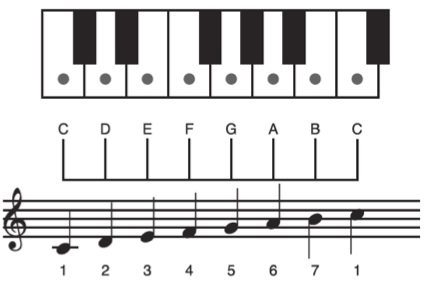How to read numeric sample notation of kalimba? 7 musical notation is a simple notation. There are two kinds of simple notation: alphabetic simple notation and numeric simple notation. The numeric simple notation is based on the chanting method, using 1, 2, 3, 4, 5, 6, 7 to represent the seven basic levels in the scale, reading the sounds do, re, mi, fa, sol, la, si, and 0 to indicate rest.
Basic Elements
- Tone height: Any piece of music is composed of high and low tones, and the shorter the key, the higher the tone from the African thumb piano (also called kalimba). In the case of a digital score, there is a “.” directly above or below the numbers. symbols, above them means high notes and below them means low notes.
- The length of the tone: In addition to the height of the tone, another important factor is the length of the tone. The high or low and the length of the tone are marked to determine the tune from another tune. The principle is expressed as the duration of the sound.
Basics
Writing: 1 2 3 4 5 6 7
Reading: do re mi fa sol la si

To mark a higher or lower note, a dot is added above or below the number. In the short form, without a dot, it is called an alto; with a dot above it, it is called a treble; with two dots, it is called a double treble. The 17 note kalimba thumb piano in C major does not have a bass, so if you have a song with a bass note, you can move the whole song an octave higher.
Augmented and Diminished Timelines
The length of a note is indicated by adding a short horizontal line, a dot, a sustained line, and a note number to the basic notes in the score.
There are two ways to use the short horizontal line: the short horizontal line written to the right of the fundamental note is called the augmentation line. The more augmented lines there are, the longer the duration of the note.
The basic note without an incremental line is called a quarter note, and each additional incremental line extends the time of a quarter note.
The short horizontal lines written below the fundamental notes are called decrement lines. The more decrement lines there are, the shorter the note. Each additional decrement line means that the note is shortened by half the length of the original note.
The dot written to the right of the note is called a dot, which extends the time value of the preceding note by half.
The symbols that temporarily change the pitch of a note are called temporary change marks, mainly the ascending and descending signs. The ascending sign is written at the top left of the note and indicates that the note has raised a semitone, e.g. #1 means that 1 is raised a semitone, which requires special tuning on the thumb piano. The descending sign is written at the top left of the note and means that the note is lowered by a semitone, e.g. b3 means lowering 3 by a semitone, which also requires tuning on the thumb piano.
Note Length
The notes are divided into whole notes, dichotomous notes, quarter notes, eighth notes, sixteenth notes, and so on. The most important of these notes is the quarter note, which is a basic reference length, i.e. a quarter note is a beat. There is no limit to the length of a beat, it can be 1 second or 2 seconds or half a second. If one beat is the length of one second, then two beats are two seconds; if one beat is set to half a second, two beats is the length of one second. Once this basic one-beat is set, it is relatively easy to set symbols that are longer or shorter than one beat.
| Note names | Writing method | Time value |
| Whole note | X — | Four beats |
| Diatonic notes | X- | Two beats |
| Quarter note | X | One beat |
| Eighth note | X — | Half beat |
| Sixteenth note | X = | Quarter beat |
| Thirty-two notes | X ≡ | Thirty-two notes |
Rhythm
To master reading music, you must first master the rhythm, and practice mastering the rhythm to be able to hit the beat accurately. The beat of

The method is hand down is half a beat, palm up is half a beat, one up is a beat.
Extension Line
In thumb piano notation, the arcs are marked on the top of the notes and are called sustain lines.
The sustain line: If it is the same note, only the first note is played, and the second note keeps its time value.
